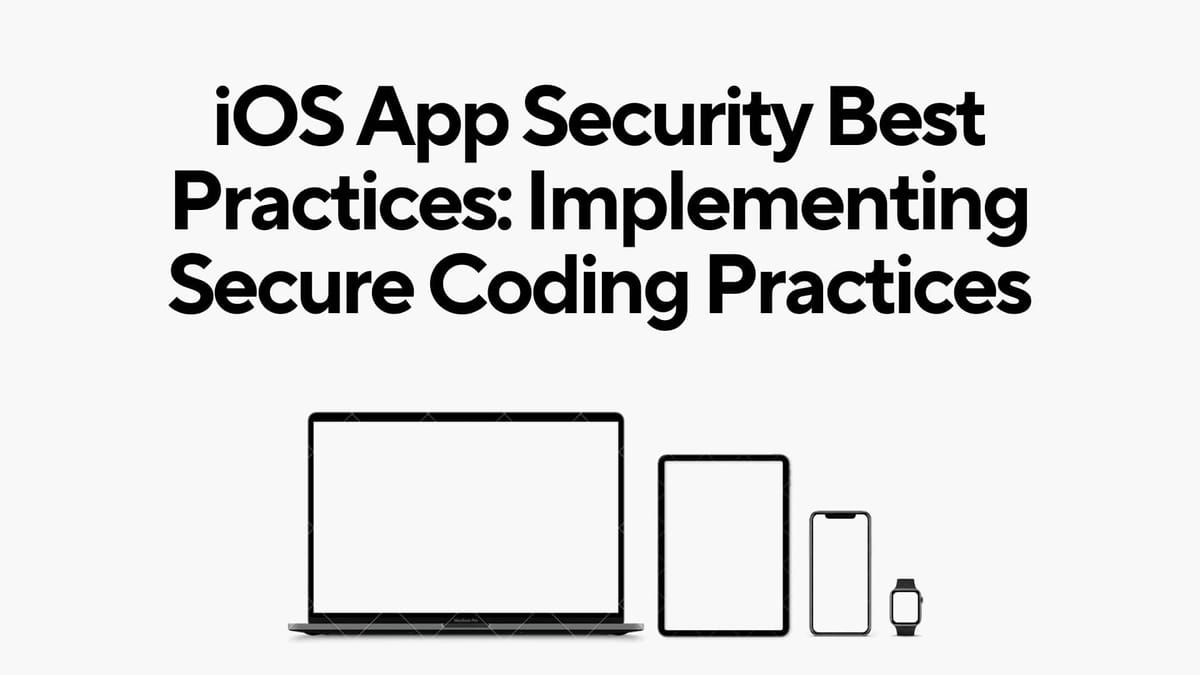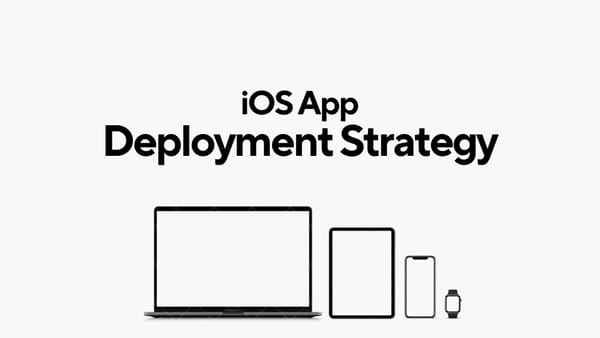iOS App Security Best Practices: Implementing Secure Coding Practices

In the ever-evolving landscape of mobile app development, ensuring the security of your iOS applications is paramount. With a myriad of potential threats ranging from data breaches to unauthorized access, adopting robust security practices is crucial. This tutorial will delve into app security best practices, providing you with a comprehensive guide on implementing secure coding practices in iOS app development.
1. Start with a Secure Foundation:
Begin by ensuring that your development environment is secure. Use the latest version of Xcode and keep your development machine's operating system up-to-date. Regularly update dependencies and third-party libraries to patch known vulnerabilities.
2. Data Encryption:
Implement strong encryption algorithms to protect sensitive data, both in transit and at rest. Utilize Apple's CommonCrypto framework to handle encryption and decryption operations securely. Encrypt sensitive data stored on the device using technologies like Apple's Data Protection API.
3. Secure Network Communication:
Use secure communication protocols such as HTTPS to encrypt data transmitted between your app and servers. Avoid the use of deprecated and insecure protocols like HTTP. Implement certificate pinning to ensure that your app communicates only with trusted servers.
4. OAuth and Token-Based Authentication:
Implement OAuth and token-based authentication for user logins. Avoid storing sensitive information like passwords locally. Instead, use secure token-based authentication mechanisms to authorize and authenticate users.
5. Input Validation:
Validate all user inputs to prevent common vulnerabilities such as SQL injection and cross-site scripting. Use input validation techniques to sanitize user inputs and ensure that malicious data does not compromise your app's security.
6. Secure File Handling:
Properly manage file access permissions and avoid storing sensitive information in plain text. Use secure file storage mechanisms provided by iOS, such as the Keychain Services API, to store sensitive data like passwords and tokens securely.
7. Implement Two-Factor Authentication (2FA):
Enhance user account security by implementing two-factor authentication. This adds an additional layer of protection, requiring users to provide a second form of verification beyond their password.
8. Regular Security Audits:
Conduct regular security audits of your codebase to identify and address potential vulnerabilities. Utilize tools like static code analyzers to scan your code for security issues. Perform penetration testing to simulate real-world attacks and identify weak points in your app.
9. Secure Session Management:
Implement secure session management practices to protect user sessions. Use secure session tokens, enforce session timeouts, and provide users with the ability to log out securely.
10. Secure Data Transmission with App Transport Security (ATS):
Leverage App Transport Security (ATS) to enforce best practices in the secure connections between your app and back-end services. Configure ATS to allow only secure connections and restrict connections to servers with valid TLS certificates.
11. Regularly Update Dependencies:
Keep third-party libraries and dependencies up-to-date to ensure that your app benefits from the latest security patches. Regularly check for updates and promptly address any reported vulnerabilities.
12. User Permissions:
Respect user privacy and only request the minimum necessary permissions. Clearly communicate why specific permissions are required and allow users to manage their preferences easily.
13. Secure Code Review:
Conduct thorough code reviews with a focus on security. Collaborate with team members to identify and rectify security vulnerabilities during the development phase.
14. Monitor and Respond to Security Incidents:
Implement monitoring tools to detect and respond to security incidents. Set up alerts for suspicious activities and continuously monitor your app's behavior.
15. User Education:
Educate users about security best practices. Provide clear instructions on creating strong passwords, enabling security features, and recognizing potential security threats.
In conclusion, incorporating robust security measures into your iOS app development process is essential to safeguard user data and maintain the integrity of your application. By following these app security best practices, you can create a more resilient and secure iOS app that instills confidence in both users and stakeholders. Remember, security is an ongoing process, and staying vigilant against emerging threats is key to ensuring the long-term security of your iOS applications.



